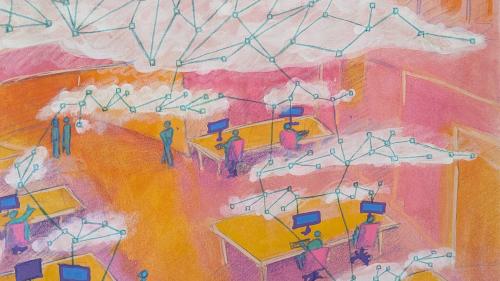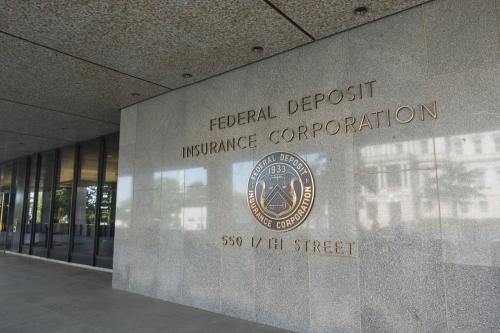The Federal Reserve (Fed) recently requested thoughts and viewpoints on the importance of upgrading America’s payment system to operate in real time. In a comment letter to the Fed, Brookings fellow Aaron Klein details how instituting real time payments is the most efficient, effective, and fastest policy the Fed could utilize to address income inequality and support small and new businesses. This post summarizes his key points: (the full comment can be found here)
The Federal Reserve has substantial regulatory powers to require a real time payments system. Congress has granted the Fed the authority to set time periods for deposited payments to be held with statutory maximums, no minimums, and regulatory flexibility with a stated goal of “as short a time as possible”. Thus, the Fed, as regulator of the payment system, can require real time availability. Rather, it should.
One of the reasons the Fed has been stuck in gridlock on this issue is that the Fed is conflicted by its dual role as regulator of the entire nation’s payment system and as operator of multiple payment systems. Many of the Fed’s payment systems (FedWire, ACH, etc…) operate on old technology or systems that are not easily updated to real time. If the Fed were to fulfill its regulatory responsibility and require real time payments tomorrow, the Fed’s own systems would be out of compliance.
Failure to act on faster payments costs billions of dollars to working families. The slow payments system drives individuals to use high cost check cashers ($2 billion annual fees), small dollar ‘pay day’ lenders ($7 billion) and experience bank overdraft fees ($24 billion). While all payday loans and overdrafts occur among banked customers (the products require bank accounts), Federal Reserve data show that the majority of people who use check cashers have bank accounts.
Why would someone with a bank account use a check casher? Last month, November 30th was Friday. Many obligations are routinely due on the 1st of a month, often taken out by direct debit (rent, mortgage, child care, monthly subscriptions, memberships, etc.…). Using the existing payment system, it could take until Tuesday or later before funds paid on the last day of the month are available for obligatory payments. A single bank overdraft costs $35, while a check casher costs around $20 and cash appears in your account immediately.
In the aggregate, high cost cashiers, ‘pay day’ lenders and bank overdraft fees totaled around $34 billion of revenue in 2015 (collection fees would add to this). There are no precise estimates as to what share of that figure would be fixed by real time payments. A conservative guess of 20 percent would result in about $7 billion in savings a year to lower income families directly from real time payments. This comes at no cost or savings to the wealthier half of Americans who generally do not use these services.
The rest of the world is moving on. Nations across the globe (UK, Mexico, Poland, South Africa) have implemented real time payments, mostly a decade or more ago. The European Union recently completed a trans-national real time payment system, better integrating their economies and providing valuable services for consumers and businesses. Checks between France and Poland will clear faster than between two banks in the same city in the U.S. The United States is falling further and further behind.
The Fed has been placed in a difficult situation in managing its conflict between regulating and operating the payments system. Stakeholder groups are also divided. Banks and nonbank financial services companies will likely lose substantial revenue from products such as overdraft, check cashing, and high cost small dollar loans. Many of the savings consumers would enjoy from real time payments would reduce these high margin profit-generating services. Further division exists between banks that have invested in real time payments platforms and services and those that have not.
Almost twenty years ago, the Fed faced similar challenges when it proposed legislation in 2001 to change the payment system in response to then new technology of the day, electronic check. Some opponents to check imaging argued that it would lead to increased fraud, in fact the opposite happened. Similar arguments concerning increases in fraud are being used against progress again. International experience demonstrates that fraud decreases in a real time environment. And while real time payments doesn’t eliminate fraud, the proper baseline to use is the current system not a mythical zero fraud world. The best way to deal with fraud concerns is to extend existing consumer protections to digital wallets as originally proposed by the Consumer Financial Protection Bureau (CFPB).
Thanks to the Fed’s strong leadership, today Americans can use their smart phones to deposit checks almost anywhere. Imagine if the Fed had delayed electronic check imaging due to any of the concerns above. That would have been bad policy then, just as it is bad policy to delay real time payments today. While check imaging required an act of Congress, adopting real time payments does not. The question is whether the Fed will follow its own example from 2001 and press forward, or if it will continue the practice of study and delay. The answer will impact the lives of millions of American families who are living paycheck to paycheck, small businesses for whom access to funds is most expensive, and new businesses providing services that require technology appearing with growing ubiquity throughout the rest of the world, but not in the U.S.
The Brookings Institution is committed to quality, independence, and impact.
We are supported by a diverse array of funders. In line with our values and policies, each Brookings publication represents the sole views of its author(s).







